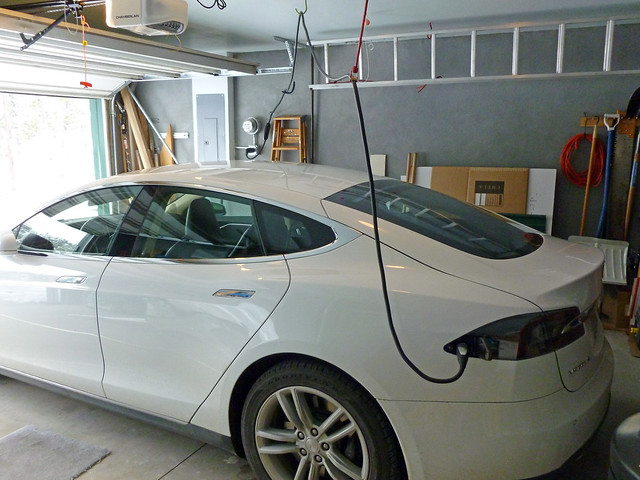All good questions. The "UMC" (Universal Mobile Connector) is a portable EVSE (Electric Vehicle Supply Equipment). It serves to connect the car to an AC power source. Tesla also sells the HPWC (High Power Wall Connector) that would be permanently mounted on the wall of a garage (or hotel or other place to charge). The UMC comes with a 14-50 plug but it can be used with adapters to fit other outlet and circuit types. The Model 3 will (likely) come with a UMC and a NEMA 5-15 adapter for standard 120 V outlets. So, yes you can use a 120 V outlet but it is very, very slow, about 3 to 4 miles of range per hour of charge rate. By contrast, a UMC on a 240 volt 14-50 outlet charging at 40 amps would charge at about 32 miles per hour. (And a Tesla Supercharger Station can charge as fast as 300+ miles per hour, depending on the battery size and how empty it is, but the charge rate tapers as the battery fills.)
Any EVSE acts as a safety device that doesn't allow current to flow to the car's on-board charger unless a "handshake" signal is passed between the device and the car. So, it is more than just a long extension cord.
All of the Tesla charging devices — UMC, HPWC, and Superchargers — use a special Tesla plug to fit to the car. To use a standard EV charge station J1772 plug, Tesla supplies an adapter that fits between that plug and the car. So, Teslas can use most Level 2 public charge stations but other EVs can't usually use Tesla UMC, HPWC or Superchargers. Teslas can also use Chadema DCFC "quick charge" stations with an adapter ($450).
As for what the outlet and UMC looks like, I have these pictures:
^ This is a 240 volt, 50 amp, 14-50 outlet. I have a meter on it, but that isn't really necessary. The UMC plugs directly into that outlet and can charge at up to 40 amps.
^ My car with UMC cable plugged-in. Note that the UMC device itself is plugged-in to the wall outlet. I could park in the other direction with the car's charge port near the wall outlet but I prefer to run the cable along the ceiling to keep it off the floor and out of the way. Just a personal preference. Most people don't do it this way and just put the cable on the floor and coil it up when not in use.





